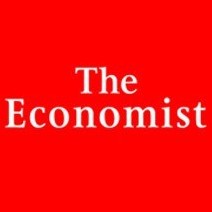几年前,有关欧元区经济清一色都是单调的负面新闻。而最近,没完没了的利好数据同样令人觉得乏味。11月数据显示,截至9月底的三个月里GDP增长了0.6%(年化增长率为2.4%)。欧盟委员会的经济景气指数上升至近17年的最高点。然而,10月26日欧洲央行管理委员会召开会议,决定维持几近为零的利率不变,并且将债券购买计划(即“量化宽松”,QE)再延长九个月。
A FEW years ago, the news about the euro-zone economy was
uniformly bad to the point of tedium. These days, it is the humdrum diet
of benign data that prompts a yawn. Figures in November show that GDP
rose by 0.6% in the three months to the end of September (an annualised
rate of 2.4%). The European Commission’s economic-sentiment index rose
to its highest level in almost 17 years. Yet when the European Central
Bank’s governing council gathered on October 26th, it decided to keep
interest rates unchanged, at close to zero, and to extend its
bond-buying programme (known as quantitative easing, or QE) for a
further nine months.
欧洲央行表示将会减少每月债券购买规模,从2018年1月起降至每月300亿欧元(350亿美元)。但行长马里奥·德拉吉(Mario
Draghi)拒绝为QE设定退出时间。他指出,在通货膨胀率稳定在欧洲央行略低于2%的目标前,仍然有必要投放巨额的宽松货币。尽管经济走强,但几乎没有迹象表明欧洲央行能够实现这一通胀目标。根据欧洲央行会议几天之后发布的数据,今年10月,排除了食品和能源价格波动的基本通胀率即核心通胀率从1.1%跌至0.9%。2010到2012年间欧元区的惨状非同寻常,但现在,那里经济活动旺盛、通胀率低、货币政策宽松,境况有所改善,一如很多其他大经济体。
The central bank said it would slow down the pace of bond purchases each month, to €30bn ($35bn) from January. But Mario Draghi, the bank’s boss, declined to set an end-date for QE. A hefty dose of easy money will be necessary, he argued, until inflation durably converges on the ECB’s target of just below 2%. It shows few signs of doing so, despite the economy’s strength. Underlying, or core, inflation, which excludes the volatile prices of food and energy, fell from 1.1% to 0.9% in October, according to data published a few days after the ECB meeting. The euro zone’s miseries of 2010-12 were unique. But in its present, happier state of vigorous activity, low inflation and easy monetary policy, it is like many other big economies.














